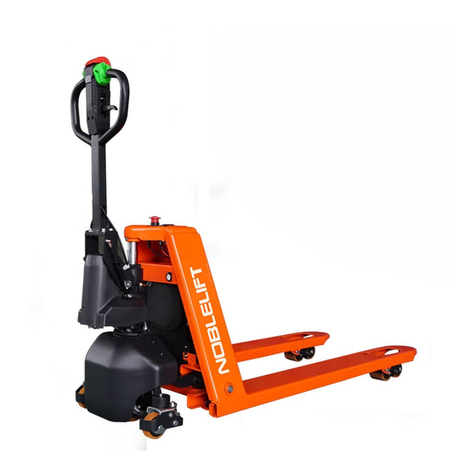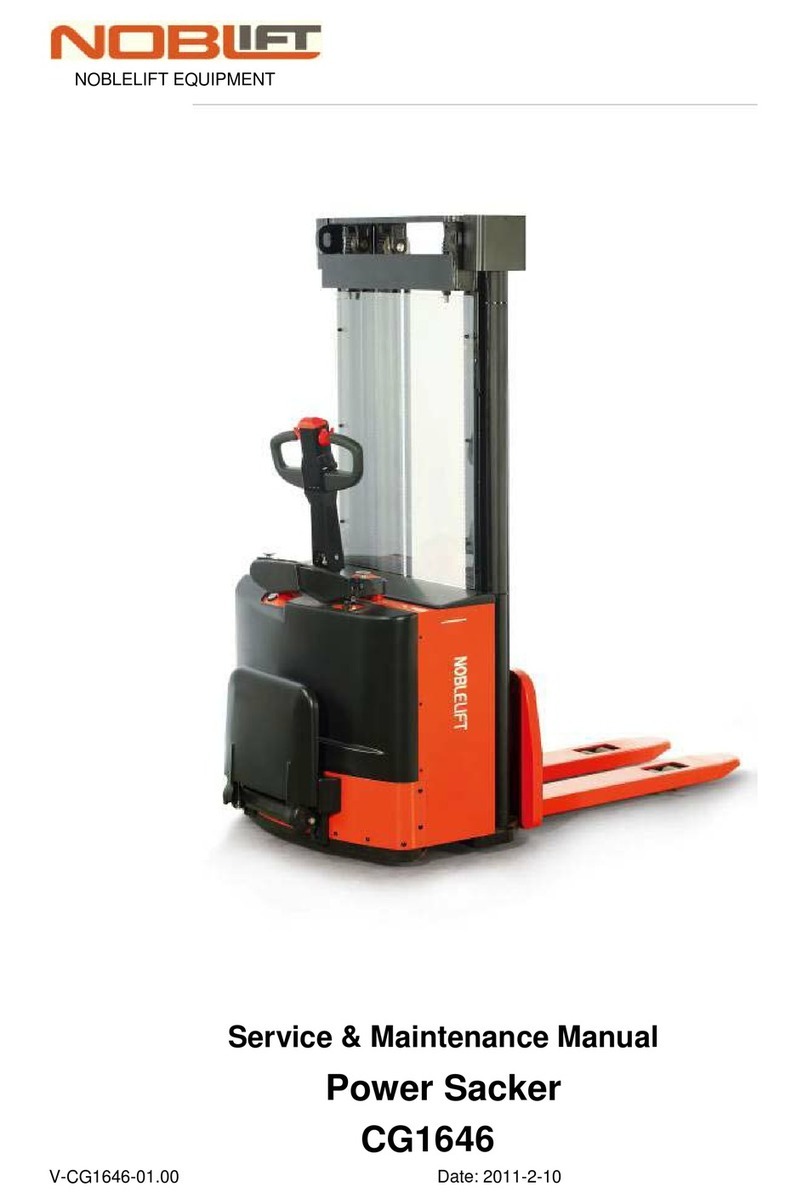2
TABLE OF CONTENTS
1.CORRECT APPLICATION ...............................................................................................................3
2.DESCRIPTION OF THE STACKER .................................................................................................4
a.Overview of the main components ................................................................................................4
b.Main technical data .......................................................................................................................5
c.Description of the safety devices and warning labels (Europe and other, excepting USA) ...........7
d.Identification plate .........................................................................................................................7
3.WARNINGS, RESIDUAL RISK AND SAFETY INSTRUCTIONS.....................................................8
4.COMMISSIONING, TRANSPORTING, DECOMMISSIONING .........................................................8
a.Commissioning..............................................................................................................................8
b.Lifting/ transportation.....................................................................................................................9
c.Decommissioning........................................................................................................................10
3.DAILY INSPECTION ......................................................................................................................10
4.OPERATING INSTRUCTIONS.......................................................................................................10
a.Parking........................................................................................................................................11
b.Residual lift diagram....................................................................................................................11
c.Lifting...........................................................................................................................................11
d.Lowering......................................................................................................................................11
e.Travelling.....................................................................................................................................12
f.Steering.......................................................................................................................................12
g.Braking........................................................................................................................................12
h.Malfunctions................................................................................................................................13
i.Emergency..................................................................................................................................13
5.BATTERY CHARGING AND REPLACEMENT..............................................................................13
a.Replacement...............................................................................................................................14
b.Battery Indicator..........................................................................................................................14
c.Charging......................................................................................................................................14
6.REGULAR MAINTENANCE...........................................................................................................15
a.Maintenance checklist.................................................................................................................15
b.Lubricating points ........................................................................................................................17
c.Check and refill hydraulic oil........................................................................................................17
d.Checking electrical fuses ............................................................................................................17
e.Removing, reattaching guarding .................................................................................................18
7.TROUBLE SHOOTING ..................................................................................................................18
8.WIRING/ CIRCUIT DIAGRAM........................................................................................................20
a.Electrical circuit diagram .............................................................................................................20
b.Hydraulic circuit...........................................................................................................................21
9.SPECIALIZED STIPULATIONS FOR THE US- AMERICAN MARKET.........................................22
a.Foreword/ Compliance....................................................................................................................22
b.Description warning labels (only US- market).................................................................................23
10.DECLARATION OF CONFORMITY (valid, if sold within the EU) ...............................................25


































